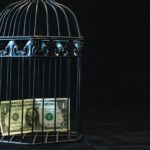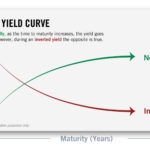We are writing about an hour after the US equities markets opened this morning, February 28th, 2020, and it looks like another dismal day, AFTER serious market losses already posted this week.
The global onset and spread of the coronavirus has investors and laypersons alike highly concerned. Might the coronavirus have a sustained strong negative impact on world economies? Can this potential pandemic be the impetus for a full-on economic recession in the USA?
The biggest question – what should I do with my investments right now?
First, to remind you of what we said in our February Recession Report, these are excerpts from what we sent out two weeks ago:
“…with fears associated with an outbreak of a somewhat deadly new virus originating from China. With a fatality rate of about 2%, which is four times higher than more garden variety influenza here in the US, and a seemingly more virulent transmissivity, many nations are devoting significant efforts to stop its spread. As we write, the total number of cases has already passed 60,000 (mostly in China), with nearly 1500 dead. The US CDC recently modeled such an outbreak, for this type of virus, and projected that as many as 65,000,000 people could become infected globally. So you can understand why there is great concern about this situation, and how a significant spread of that magnitude (and 1.3 million fatalities!) could affect people, with both fear and the need for physical isolation transferring negatively into national economies.”
“In our November 1 update, we said that 10%+ upward move in the S&P500 was very possible, and our AP-SI indicator would be yellow or even red for the next several months. A red indication from sustained upward moves tells us that the equities markets have gotten seriously ahead of themselves, and that a dangerous bubble in equities has begun to form. As of this writing (2/13/2020), the S&P500 is up 11.2% since Nov 1, soundly fulfilling our 10%+ gain prediction made in our November report.”
“Growing wariness of SOMETHING coming along to put a pin in the economic bubble are again affecting interest rates. The yield curve has again re-inverted, but not yet with any large degree of negative slope. At the end of January, the three month Treasury yield was at 1.55%, down 4 basis points over the month, but the ten year yield dropped by a dramatic 44 basis points, from 1.95% to 1.51%. So our AP-YC Indicator goes to red again, due to a negative 4-point comparison between the 3 month and 10 year instrument yields. This is NOT a good sign.”
“Stock market indices moved strongly through previous all-time highs, with the S&P500 ending the January at 3226, but up another 150 points since then!. This move has put our AP-SI Stock Index indicator further into yellow, hovering at the very edge of our red HOT ZONE value for this index. For comparison purposes, at the end of February, the red zone begins at 3383 for the S&P500, yellow zone range is 3074-3382, and a “return to the mean” value for a hard correction would be down to 2479. So the ceiling is very close, and the elevator shaft goes down a long way.”
It didn’t take long for our TIMELY warnings to come to reality.
Markets took a nosedive one week after these comments, in large part due to COVID-19 (coronavirus) spread and fears of a potential pandemic. Because we live in an interconnected global economy, even if the infections remain light and contained in the USA, the rest of the globe WILL experience an economic slowdown, and this will affect our domestic economy more than most people realize. The price of oil has plummeted 26% in less than three months (from $61/bbl to $45/bbl), and that has long term ripple effects for global economies. (Silver lining(?) here – gasoline prices will soon be below $2/gallon for regular 87).
What should you do now?
This is our thinking, for you to consider. At this moment, there is about a 50-50 chance of the following two scenarios for stocks regarding the coronavirus and recession possibilities. We have to apologize for not being able to be clearer, but the numbers we watch do not permit a more refined approach than “50-50”. We’ll have a better idea as effects ripple through the economy in the weeks to come.
FUTURE Scenario 1:
Total damage to the equities markets is limited to about 25% from peak (S&P500 drops to about 2500), and markets recover within about one year. If you are risk-tolerant, you stay in and ride it out. If you are not risk-tolerant, go to cash or bonds. These are personal decisions, and AP is providing this as information only.
FUTURE Scenario 2:
This market correction deepens due to the onset of a recession from a global economic slowdown. Equities markets anticipate and reflect this, and a multi-year bear market ensues, with a dramatic decline in equities prices – the S&P could drop to below 1500. In this case, if you are risk-tolerant or not, this is the time to get out of the equities markets and wait for an “all clear” signal out in the 2022-2025 timeframe. Again, this is a personal decision, and AP is merely providing information as input to your decision-making process.
Our own “intuition” at this point sadly favors Scenario 2, but that is not yet borne out by factual economic data. As an AP subscriber, you will have the numbers and a more factually refined outlook as the future unfolds before us. Be among the first to know if the coronavirus will have lasting implications.
In its entirety, this material is Copyright AdvancedProjections.com 2020 and cannot be reproduced or shared without explicit consent. It is not meant as professional advice and any actions taken by the reader are at the sole discretion of the reader. AdvancedProjections.com takes no liability for decisions and actions made by the reader.







Super interesting stuff! I hope it doesn’t get too bad.. Thoughts and prayers for affected people and families…